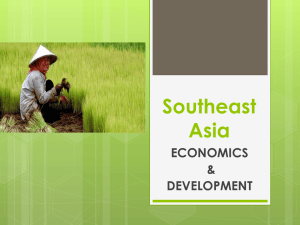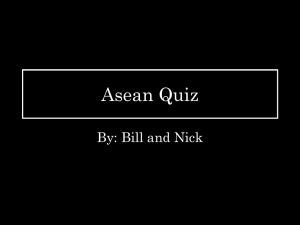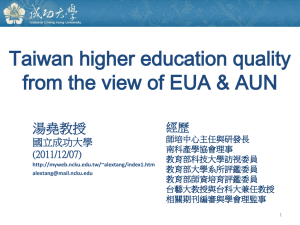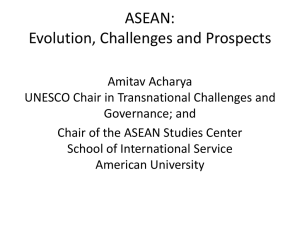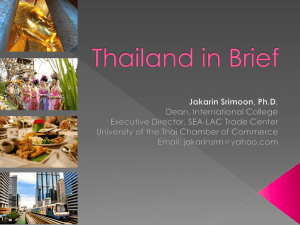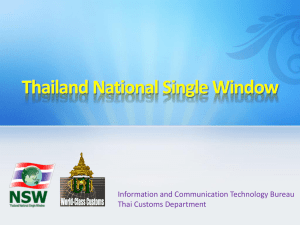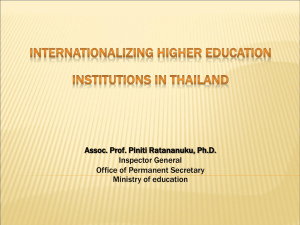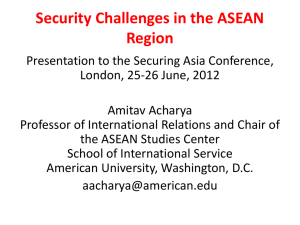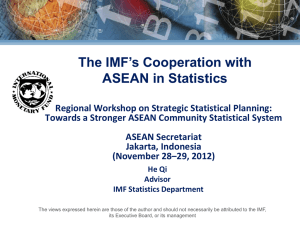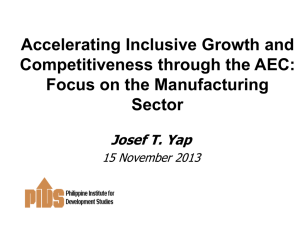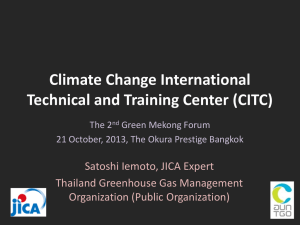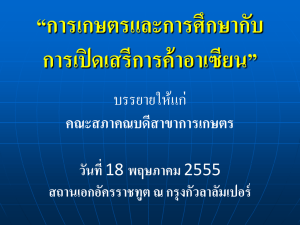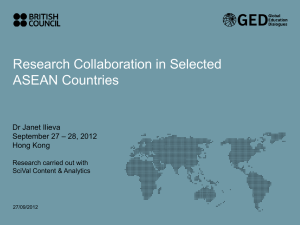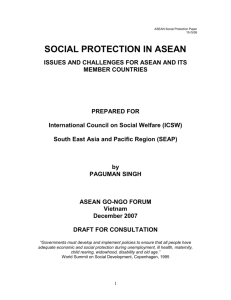Labor sending - isc.edu.ku.ac.th
advertisement
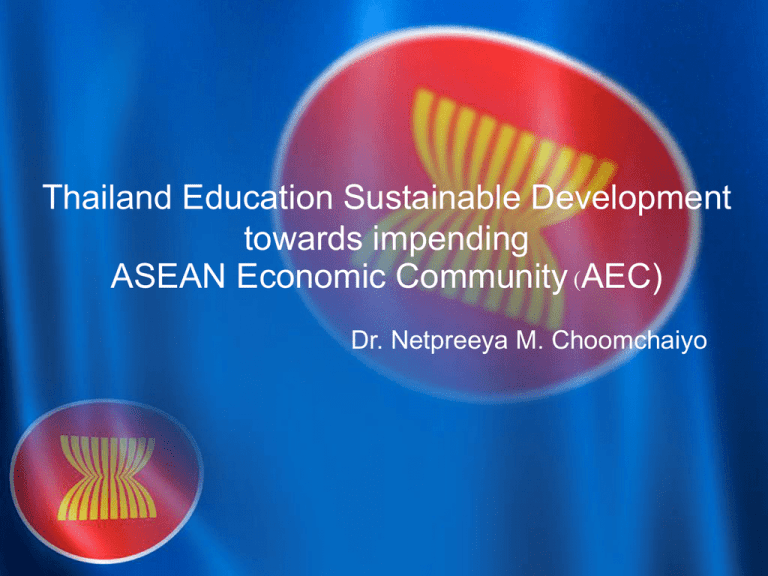
Thailand Education Sustainable Development towards impending ASEAN Economic Community (AEC) Dr. Netpreeya M. Choomchaiyo ASEAN Economic Community (AEC) Free Movement of • Products • Services • Labors and professionals • Capitals Facts about ASEAN workers Million 700 600 651 621 588 500 350 400 300 300 250 200 100 0 2010 2015 2020 Total Population Total Workers (Skilled Labor & Professionals) Year Why do host countries welcome international labor and professional immigrants? 1. Ease labor shortage problem 2. Increase efficiency in the use of ASEAN’s resources 3. Raise total outputs and incomes for the host countries 4. Stimulate the creation of small businesses 5. Increase savings, investment and human capital formation Why do workers migrate? 1. In search of higher incomes 2. Lured by friends and relatives, and social networks 3. In search of adventure, exploration, curiosity 4. Fleeing from persecution, armed conflict, suppression of ethnic groups and environmental degradation Why do workers migrate to Thailand? 1. 2. 3. 4. 5. Local attitudes towards foreigners Great and cheap living paradise Low personal income and consumption taxes Flexible labor regulations Big job opportunities and promising career development 6. Business and investment opportunities Why do firms in Thailand hire foreign workers and professionals? 1. 2. 3. 4. Higher output and efficiency Reduce expenses on social welfare Gain connections overseas Less problems (easier termination of contract) Migration status of Asian countries Labor sending Labor sending and Labor receiving receiving • Middle East, • Bangladesh, • India, • • • • • • China, Indonesia, Nepal, Philippines, Sri Lanka, Vietnam • • • Malaysia, Pakistan, Thailand • Brunei • Darussalam, • Taiwan (China), • Japan, • Republic of Korea, • Hong Kong SAR, • Singapore The increase of labor productivity (2007-2009) Percentage 10 % 10 8 6 5% 4% 4 3% 2 0 Countries China India Indonesia Thailand ASEAN will pilot a free labor market for 7 professionals in 2015 1. 2. 3. 4. 5. 6. 7. Medicine Dentistry Nursing Engineering Architecture Natural resources and geographical exploration Accounting Increasing demands for skilled labor 1. 2. 3. 4. 5. Automotive technicians Machinists Welders Carpenters Shopkeepers • Thailand and The Philippines have highly skilled labor Singapore, Malaysia and The Philippines have high level of English language Proficiency • Thailand labor market in 2015 NON ASEAN ASEAN Eastern Europe, Taiwan, India, Hong Kong China, India Bangladesh, Pakistan CEO Highly Skilled Labors Skilled Labors / Office Workers Job largely shunned by Local Populations Singapore, Malaysia Philippines, Malaysia, Vietnam, Thailand ? CLM ASEAN labor market in 2015 ASEAN NON ASEAN Eastern Europe, Taiwan, India, Hong Kong China, India Sri lanka, Bangladesh, Pakistan CEO Highly Skilled Labors Singapore, Malaysia, Thailand ? Skilled Labors / Office Workers Philippines, Malaysia, Vietnam, Thailand ? Job largely shunned by Local Populations CLMV, Thailand ?, Indonesia Academician vs. Practitioner 20% 80% academician (higher education) practitioner (vocational education) Major human resources challenges for ASEAN 1. 2. 3. 4. Enhancing workforce competitiveness Improving workforce skills and employability Rebuilding employment Accelerating productivity HR development through • closer cooperation in education • life-long learning • promotion of public-private sectors cooperation at regional and national levels • promotion of vocational training and workforce learning Basic skills for Gen-A • • • • • English (and Chinese) IT Creative thinking and logical thinking Well-rounded International attitudes (ASEAN culture, ASEAN enterprise) Thailand Education Sustainable Development towards impending ASEAN Economic Community • • • • • International Curriculum Development Gen – A Educators Quality Control for Standards Reform Ministry of Education Cooperation among ministers (education, labor, commerce, industry etc.) • Attitude changes for parents, students, teacher, managers and regulators • Cooperation among ASEAN members Thank You For Your Attention

